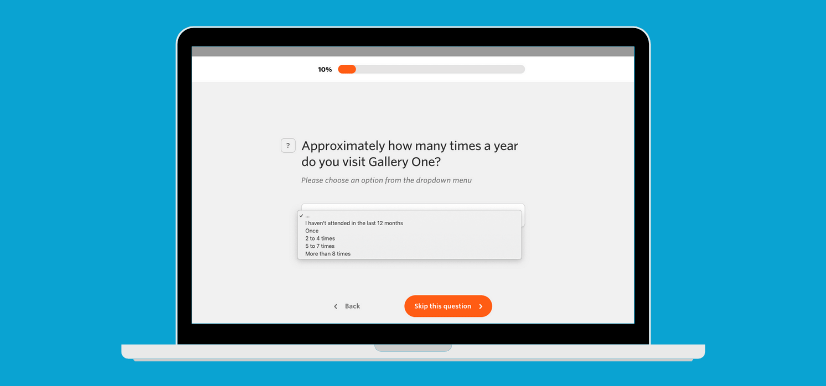If your organisation’s individual programs aren’t able to continue for the time being, how about looking at distributing a general survey to capture overall feedback and measure the impact of your organisation as a whole? Here are some suggestions on how to approach this.
At a time when the majority of the public are self-isolating, time itself is something most people would have, and three minutes of feedback is incredibly valuable right now. If your individual programs aren’t able to continue for the time being, how about looking at constructing a general survey to capture overall feedback and measure the impact of your organisation as a whole?

General surveys can ask ‘big picture’ questions about general behaviour and more specifically, engagement with your organisation. Some examples of questions that may be useful to your future programming and marketing strategies include:
- Approximately how many times a year do you visit <organisation name>? Question type: Number
- Which of the below <organisation name> programs and initiatives have you previously heard of? Question type: Multiple Choice
- What have been your reasons for attending <organisation name or event>? / What have been your reasons for not attending <organisation name or event>? Question type: Multiple Choice
- General perceptions of your organisation using your dimension statements. Question type: Slider
General surveys give you the opportunity to reach out to your database as a whole, and potentially capture responses from members who aren’t engaged currently, rather than sampling only the audiences that are currently at your events.
Incorporating dimension statements that relate to your organisation’s overall vision and mission can help you measure ‘big picture’ impact data. If you’ve been previously evaluating according to program-specific outcomes, or haven’t already done so, now may be an opportunity to do some overall strategic work. A strategic alignment will allow you to identify outcomes and their accompanying dimension statements according to your organisation’s overall strategic objectives. If you have already identified a core set of dimensions, these will still be applicable to a general survey because you’re asking your respondent to reflect on their past experience of your organisation overall.
Example survey – try it for yourself!
Here is an example of a general survey created for a demo arts organisation called Gallery One, based in Sydney for the purpose of this example. Try this survey from both perspectives; as someone who has attended the organisation within the last 12 months, and as someone who hasn’t. This is an example of how you can incorporate some market research methods into your general survey to understand who out of your current database are currently engaging, where they are located (local, national, or international), and gather general demographics along with your outcome data.
Once you have a general survey set up for your organisation, you could use this as a template and consider distributing this once each year to compare year-on-year results. This comparative data could be helpful in giving your organisation a ‘sense’ check of the level of engagement of your wider database.
Feel free to reach out to your Culture Counts’ Client Manager for a copy of this template and advice on how to customise this for your organisation. If you aren’t a current Culture Counts member, enquire here and one of our friendly team will be in touch.







